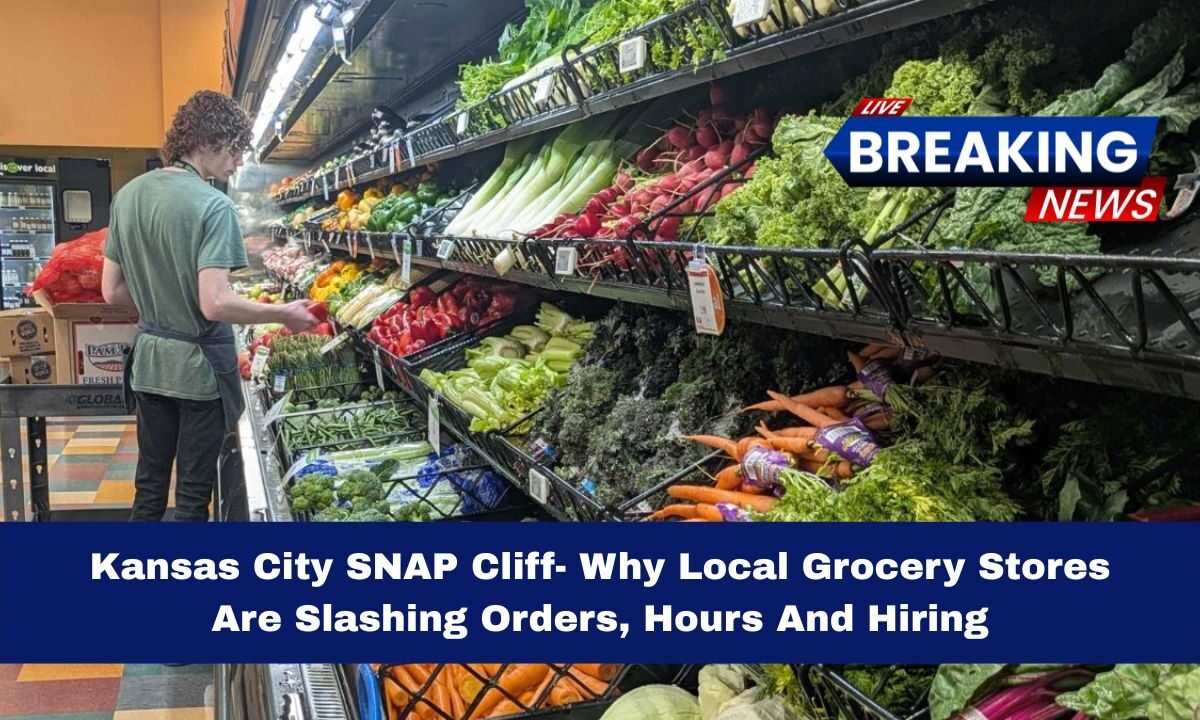Grocery stores across the Kansas City metro area are bracing for a sharp drop in business as the federal food-aid program Supplemental Nutrition Assistance Program (SNAP) heads for a funding cliff set to hit on 1 November 2025.
With no contingency funds being used, many families may not receive their usual benefits for November, and many stores say they are already seeing the effects: fewer SNAP purchases, slower traffic, and rising uncertainty.
The result: retailers in lower-income neighbourhoods are reporting they must cut back orders, reduce store hours, delay hiring or repairs, and scale back promotions because the loss of SNAP spending — a major part of their revenue — could push them into a financial crisis.
Why grocers are “cutting way back”
For many local grocery stores, SNAP represents a significant chunk of their revenue—often 10% or more, and in some cases up to 60-70% of purchases in certain stores that specialise in serving lower-income or SNAP-dependent customers.
When those purchases disappear or shrink, inventory management becomes difficult: perishables risk spoilage, cash flow drops, and staffing becomes harder to justify.
So, stores are taking pre-emptive action. Common adjustments include:
- ordering fewer fresh items like fruits, vegetables and meat
- reducing staff hours or delaying hiring new employees
- scaling back promotions, discounts or loyalty-card offers
- shortening store hours, especially in smaller neighbourhood locations
- postponing equipment upgrades or renovations
These changes reflect the precarious balance grocery stores face when one key revenue source suddenly wanes.
What states are doing
States in the region — especially those bordering Kansas and Missouri — are preparing for increased demand at food banks and pantries as SNAP-dependent families find themselves short.
One state announced a multi-million-dollar fund to support food assistance organisations, and local officials are coordinating to make sure emergency support is ready for a surge.
However, states cannot fully replace SNAP benefits and must weigh legal, logistical and budget constraints before stepping in.
Fast facts & dates (at a glance)
| Item | Detail |
|---|---|
| Key date | 1 November 2025 – the point when November SNAP benefits may not be issued due to funding lapse |
| Local impact | Many Kansas City-area grocers report fewer customers and lower SNAP spend already |
| Sales exposure | Snap purchases may account for ~10-15% (on average) of store sales in affected areas; some individual stores up to 70% |
| Operational moves | Grocery stores are cutting orders, scaling back hours/hiring, trimming promotions |
| State response | Local state has designated a fund of several million dollars to assist food-aid organisations |
| Federal stance | No use of contingency funds for November SNAP; states will not be reimbursed if they self-fund |
What this means for Kansas City shoppers and stores
For shoppers relying on SNAP, the short-term implication is stark: if November benefits aren’t issued, many households will face the month with no fresh benefits and will rely on what remains from October or turn to emergency food sources.
For stores, the shake-down means less revenue, harder planning, and likely fewer choices for consumers — especially in neighbourhood markets where SNAP spending is a major lifeline.
Smaller stores could reduce their fresh produce offerings because they cannot risk stocking items that may go unsold. Promotions like “buy one, get one free” may be suspended.
Some stores have already reported customers dropping off or shifting their shopping patterns ahead of the cutoff.
Emergency food infrastructure—food banks, pantries, community kitchens—is bracing for heavier demand. While helpful, these supports are not a full substitute for consistent monthly benefits and cannot replicate the regular grocery store experience.
The near-term outlook
Unless lawmakers act quickly to restore SNAP funding or provide an alternative mechanism for issuance, the Kansas City area is going to see a ripple effect: lower store traffic, reduced hours, smaller inventory variety, and increased stress on families.
If the funding pause lasts into December or beyond, the impact could deepen into the New Year, causing more stores to pull back or close smaller locations and leaving consumers with fewer options in underserved neighbourhoods.
On the other hand, if benefits are restored soon, stores may quickly try to ramp back up — but the disruption and uncertainty already in motion will likely leave lasting scars on consumer behaviour and business confidence.
The upcoming SNAP funding cliff represents more than a political impasse: it is already affecting real people and real stores in the Kansas City region.
Grocery stores are adapting by cutting orders, reducing hours and delaying hiring, while families dependent on SNAP face uncertainty in how they will feed themselves this November.
Emergency responses are ramping up, but they are uneven and cannot fully replace stable monthly benefits.
If the cliff is not resolved soon, the ripple effect may weaken local food infrastructure, shrink neighbourhood store offerings, and deepen food-access gaps in the months ahead.




